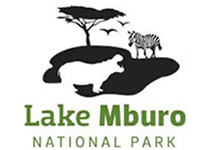Rubanga Forest is one of the places that very tourist interested in forest bird species, several primates and tree species must visit. Lake Mburo National Park is the smallest Savannah National park located in western Uganda and covers an area of 370 square kilometers. This National Park is known for a number of interesting tourist activities. However, most tourists who visit this National park only participate in Boat rides/cruises, game drives and nature walks in other places and leave without visiting Rubanga Forest which makes them to miss all the fascinating attractions within the Forest. For tourists interested in visiting Rubanga Forest and its canopies, arrangements have to be from the Uganda Wildlife Authority offices at Rwonyo Park Headquarters.
This Forest is a small tract of land covered by a forest-only forest within the National Park and the common tree species within the spectacular Rubanga Forest include fig trees, acacia trees, Markhamia, Platycalus and palm trees among others which support several wildlife and bird species. It is a must visit for botanists interested in studying about the trees and other wildlife in the Forest. Rubanga Forest is a perfect destination for bird watching because it is a home to over 40 bird species including 5 species that are special to the Forest. Some of the notable bird species include the rare Shoe bill stork, Red-faced Barbet (which is one of the rarest bird species), White-winged Tit, the grey-backed cameroptera, Ross’s Turaco, Blue-breasted Kingfisher, the Bare-faced Go-away-bird, Hairy-breasted Barbet, the Green pigeon, Emerald-spotted Wood-Dove, White-headed Barbet, Yellow-breasted Apalis, the Baleteur, Red-headed Lovebird, the Rufous-bellied Heron, Grey Crowned Cranes, the Green Wood-hoopoe, Long-tailed Cisticola, the Narina trogon, Red-shouldered Cuckoo-shrike, the Black-bellied bustard, Coqui Francolin, the Brown-chested Lapwing, the African Fin foot, Yellow-rumped Tinkerbird, the Harrier hawk, the Brown Parrot, Black-bellied Bustard, the exceptional double toothed barbet, Nubian Woodpecker and the Common Scimitarbill among others.
The acacia woodland species of birds are well represented within in Lake Mburo National Park and while at Rubanga Forest the common species include the Narina Trogon, the Lead-colored Flycatcher, the African Fin foot, the Red-headed lovebird, the Green-capped Eremomela, the Black Cuckoo-shrike, the Hairy-breasted barbet, the yellow-rumped Tinkerbird, the long tailed warbler and the Blue-breasted Kingfishers among others.
The best way to explore the wildlife and bird species within Rubanga Forest for birding or nature walks is by vehicle or on foot, and arrangements have to be made from the Park Headquarters (at Rwonyo) in advance. There are several wildlife species that call this small Forest home and they include Chimpanzees, the black and white colobus monkeys, warthogs, bush duikers and olive baboons among others.
The most common activities in this park include bird watching and nature walks that allow tourists to explore some of the birds, butterfly and mammal species that call Rubanga Forest home
How to Access Rubanga Forest
Since the forest is found within Lake Mburo National Park, the Forest has to be accessed through Kampala-Masaka-Rwonyo Park Headquarters.
Therefore, instead of participating in only boat rides, game drives, tourists who visit Lake Mburo National park should just attempt to visit Rubanga Forest and will be impressed by its rich biodiversity.
